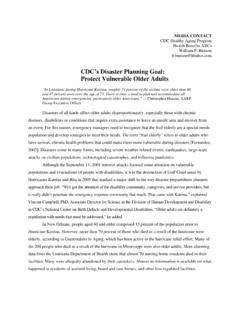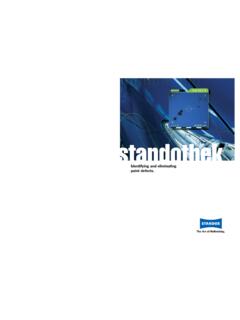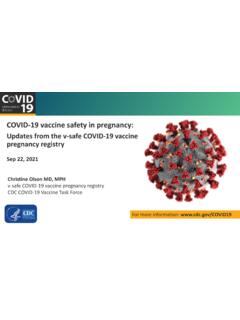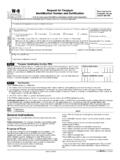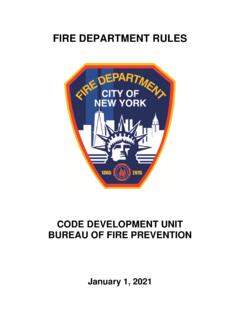Transcription of Early Intervention and Education - Centers for Disease ...
1 Early Intervention and EducationEndorsed by the American Academy of Pediatrics and the Society of Developmental and Behavioral in partnership with Health Resources and Services Administration Maternal and Child Health Intervention and EducationAutism Case Training: A Developmental-Behavioral Pediatrics Curriculum1 Three Steps to Prepare - In 15 Minutes or Less! Read through the Facilitator s Guide and make copies of the case and learner worksheet for distribution. Identify the key topics you wish to address. Consider: Knowledge level of learners Available time Your familiarity with the subject Select and prepare the optional teaching tools you wish to use. Each case provides a variety of optional materials to enhance the learning environment, support facilitator style, focus on different themes, or accommodate different time limitations. These materials are optional for facilitators to use at their discretion.
2 Handouts: select any you wish to use and make copies for distribution PowerPoint: decide if you wish to use and confirm necessary technical equipment Video: review embedded video and video library, decide if you wish to use, confirm necessary technical equipment, and conduct test run 123 AbstractTim is a 2-year, 5-month-old boy who presents to your office for follow up after receiving a new diagnosis of an autism spectrum disorder (ASD). He has been receiving Early Intervention services, and his parents would like guidance on treatment in light of his new diagnosis. When Tim reaches his third birthday, his parents also have questions about the transition to preschool in his local school district. You continue to follow Tim in preschool and are able to help monitor his progress and assist with management of new behavior problems, including GoalAppropriate Early -intensive educational therapies greatly improve long-term outcomes for children with autism spectrum disorder (ASD).
3 Effective primary care management of ASD includes supporting families by referral for appropriate therapies and community resources. After completion of this module, learners will be able to: 1. Discuss the evidence base and recommended educational therapies for children with Provide ongoing support and management for children with ASD and their families regarding educational in partnership with Health Resources and Services Administration Maternal and Child Health following case was developed by the authors. It does not necessarily reflect the views or policies of the Department of Health and Human Services (HHS) or the Centers for Disease control and prevention (CDC). Early Intervention and EducationAutism Case Training: A Developmental-Behavioral Pediatrics Curriculum2 Key Learning Points of This Case1. Discuss the evidence base and recommended educational therapies for children with List the key features of successful Early educational programs for children with ASD (Prompt )b.
4 Describe the current evidence base for commonly used behavioral therapies (Prompt )c. Understand the typical components of Early Intervention programs for children with ASD, age 3 years and younger (Prompt )d. Understand the difference between diagnosis and eligibility for an individual educational plan (IEP) for children with ASD, age 3 years and older (Prompt )2. Provide ongoing support and management for children with ASD and their families regarding educational Identify the needs of families in the transition from Early Intervention to preschool (Prompt )b. Understand the process for evaluating problem behaviors to develop a home treatment plan for children with ASD (Prompt )Only Have 30 Minutes to Teach? :30 Focus your discussion on on the available therapies and transition from Early Intervention to preschool. Use: Handouts II: Summary of Educational Rights Potential Prompts: , , , , and Provided Case Worksheet for Learners The Case Study: Part I, II, and III (available in Facilitator s Guide and on CD) Optional Teaching Tools PowerPoint with embedded videos (available on CD) Handouts (available in Facilitator s Guide and on CD) Handout I: Online Resources Handout II: Summary of Educational Rights Handout III: Sample IFSP* Handout IV: Sample IEP* Video Library (available on CD) References* We recommend that the facilitator pull a real IFSP and IEP from a clinical chart to review and discuss with the group.
5 Due to regional and state-to-state variability in service provision, the use of authentic IFSP and IEP records provides an opportunity to review examples specific to the local community of participants. A sample IFSP and IEP are provided, in case the facilitator is unable to find a local AuthorsJennifer Ehrhardt, MD, Children s Hospital Boston, Harvard Medical SchoolCarolyn Bridgemohan, MD, Children s Hospital Boston, Harvard Medical SchoolLynne Huffman, MD, Lucile Packard Children s Hospital, Stanford University School of MedicineIrene Loe, MD, Lucile Packard Children s Hospital, Stanford University School of MedicineEditors Georgina Peacock, MD, MPH, National center on Birth defects and Developmental Disabilities, Centers for Disease control and PreventionCarol Weitzman, MD, Yale University School of MedicineJana Thomas, MPA, Porter Novelli Early Intervention and EducationAutism Case Training: A Developmental-Behavioral Pediatrics Curriculum3 Early Intervention and EducationAutism Case Training.
6 A Developmental-Behavioral Pediatrics Curriculum4 Case Study Part ITim is a 2-year, 5-month-old boy who is brought to your office by his parents for a follow-up visit. At his 18-month well-child visit, he was using three single words and would cry or scream when he wanted something. Based on language delay, you referred him to his local Early Intervention (Part C) program, which has been providing Tim with an hour each of individual and group speech-language services on a weekly basis. At his 2-year well-child visit, his mother reported that he appeared to be in his own world. He played repetitively on his own with his favorite toy train for most of the day. He didn t seem interested in other children. She also reported some atypical behaviors. He walked back and forth in the family s living room and stared at the ceiling fan for long periods. Given Tim s history of communication delays, social impairments, and atypical behaviors, you referred him to a developmental-behavioral pediatrician, who recently diagnosed him with an ASD.
7 Today, Tim s parents are feeling overwhelmed by his new diagnosis and want guidance from you on the components of his treatment Case Study Part I Slide 3 Slide 4 Case Study Part I: Potential What are other services would you recommend? How often should Tim receive services? What key features should his program include? Is Tim entitled by law to receive additional services? What is an IFSP? How is an IFSP created for each family? What role do parents have in the IFSP process? How can they advocate for their child during this process? What are the strengths of this child and family?:30:30:30 Follow up with student responses to encourage more discussion: What in the case supports that? Why do you think that? What makes you say that?Case Study Part I: Discussion QuestionAfter reading the case, ask participants, What guidance would you provide Tim s parents? Why is This Case Important?For children with ASD, educational interventions are the mainstay of treatment.
8 Such interventions may include behavioral therapies, speech-language therapy, and occupational therapy. These therapies target the core symptoms of ASD and aim to improve a child s functioning across environments. Depending on age, most children with an ASD access these therapies through Early Intervention programs or local school districts. These agencies serve as important resources for children with the session goal and format of the case studySlide 1-2 Cultural CompetenceIt is important for clinicians to understand how different childrearing practices and cultural norms may influence key decisions that parents make regarding their child, including obtaining evaluations and treatment, future planning, and acceptance of the child s diagnosis. Clinicians can approach parents openly and honestly by asking them about their unique style of parenting and how the information or recommendations provided are the curriculum introduction for additional information on cultural competence and potential discussion StartedThis case is designed to be an interactive discussion of a scenario residents may encounter in their practices.
9 Participation and discussion are essential to a complete learning experience. This Facilitator s Guide provides potential prompts, suggestions for directing the discussion, and ideas for incorporating the optional teaching tools. It is not designed as a study icons: Call-out: step-by-step teaching instructions Note: tips and clarification Slide: optional slide, if using PowerPoint Filmstrip: optional slide contains an embedded video Paper: potential place to distribute an optional handout :30 Digital clock: tips if you only have 30 Minutes to Teach Early Intervention and EducationAutism Case Training: A Developmental-Behavioral Pediatrics Curriculum4 Case Study Part ITim is a 2-year, 5-month-old boy who is brought to your office by his parents for a follow-up visit. At his 18-month well-child visit, he was using three single words and would cry or scream when he wanted something. Based on language delay, you referred him to his local Early Intervention (Part C) program, which has been providing Tim with an hour each of individual and group speech-language services on a weekly basis.
10 At his 2-year well-child visit, his mother reported that he appeared to be in his own world. He played repetitively on his own with his favorite toy train for most of the day. He didn t seem interested in other children. She also reported some atypical behaviors. He walked back and forth in the family s living room and stared at the ceiling fan for long periods. Given Tim s history of communication delays, social impairments, and atypical behaviors, you referred him to a developmental-behavioral pediatrician, who recently diagnosed him with an ASD. Today, Tim s parents are feeling overwhelmed by his new diagnosis and want guidance from you on the components of his treatment Case Study Part I Slide 3 Slide 4 Case Study Part I: Potential What are other services would you recommend? How often should Tim receive services? What key features should his program include? Is Tim entitled by law to receive additional services? What is an IFSP?










